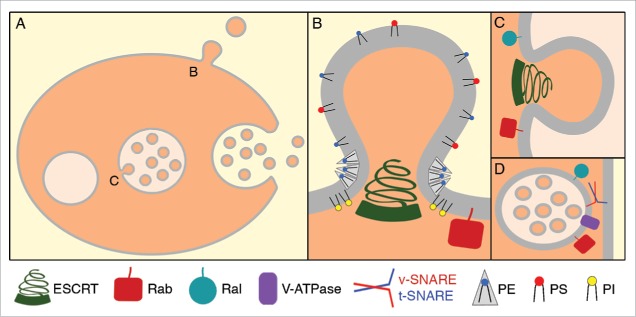Figure 1.
Mechanisms of extracellular vesicle release. (A) Extracellular vesicles can be released by direct budding of the plasma membrane to form microvesicles. Extracellular vesicles can also be released by the fusion of multivesicular bodies (MVBs) with the plasma membrane to release exosomes. To form MVBs, endosomes must first bud vesicles into their lumen, called intraluminal vesicles (ILVs). (B) Plasma membrane budding away from the cytoplasm requires Rab GTPases and the ESCRT complex. Lipids also play an important role in microvesicle budding, with phosphatidylinositols recruiting membrane-sculpting proteins and cone-shaped phosphatidylethanolamine inducing membrane curvature. (C) The budding of ILVs into MVBs also requires Rab and Ral GTPases and the ESCRT complex. (D) The fusion of MVBs with the plasma membrane to release exosomes requires vesicle tethering and fusion factors, such as Rab and Ral GTPases, SNAREs, and the V-type ATPase.

